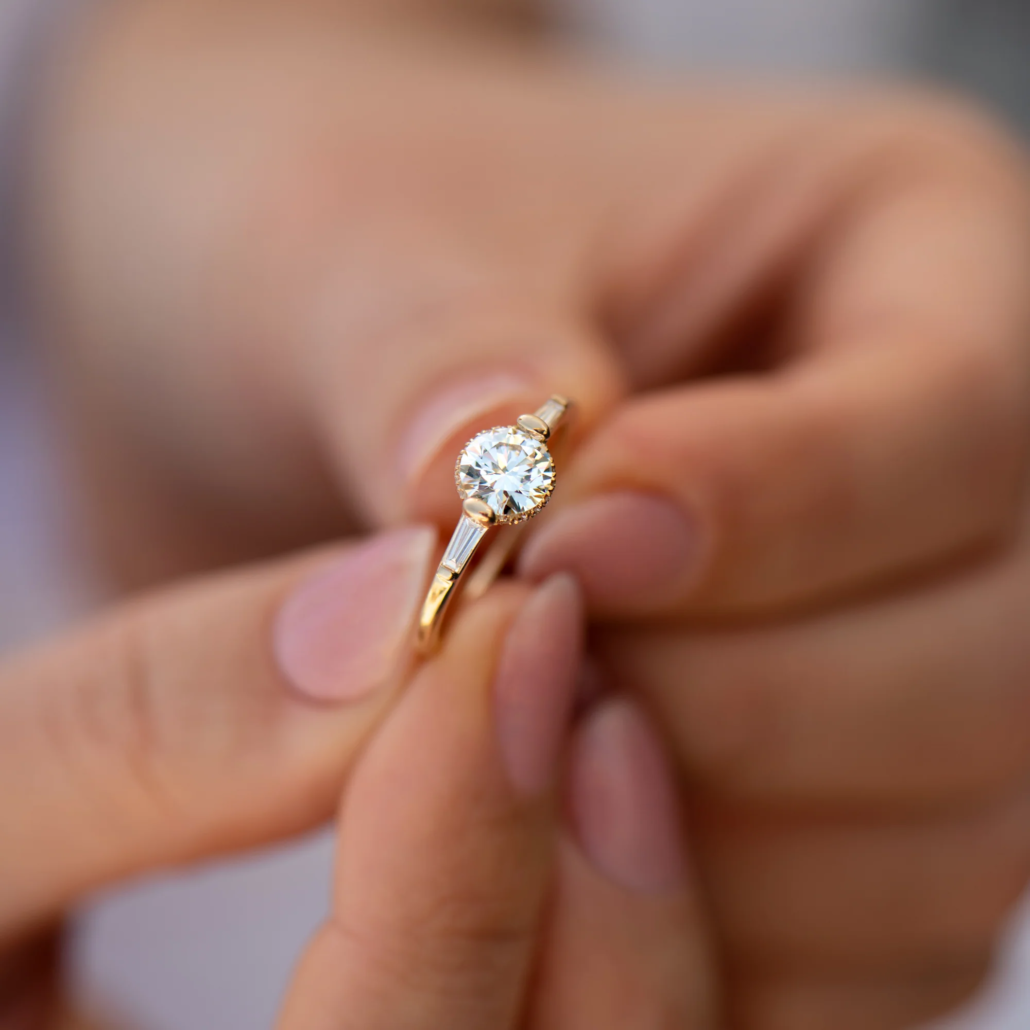What is a diamond?
What is a diamond and how is it different from a diamond?
A brilliant is a specially processed diamond with at least 57 facets. The high amount of facets gives the gem a special sparkle, hence its name. So, chemically, a diamond and a brilliant are exactly the same mineral, they're just processed differently. Every diamond is a diamond, but not every diamond is a diamond.
Natural diamonds are mined in mines, some of the most popular sites are in Canada, Russia, and Australia. Diamonds are formed at a depth of 100-200 km, where the temperature reaches even about 1000 degrees Celsius and the pressure is 35-50 kilobars. These are the conditions that turn coal into a diamond. Diamonds form in craters filled with fragmentary rock kimberlites. Craters tapering downwards are also called kimberlite pipes.
The value of a diamond is determined by the four C criteria – 4C: Cut (cut/shape/cut), Clarity (clarity), Color (color), Carat (weight). These diamond evaluation criteria were developed by the Gemological Institute of America (GIA) back in 1939. Round cut, white diamonds are most often used in jewelry. Of course, there are also lovers of more interesting shapes and colors. For those who like stricter shapes, square or rectangular gemstones (princess or emerald cut) are perfect. Rarer colors, such as yellowish or cognac, are slightly cheaper than white, but can also sparkle and reflect light perfectly. Black diamonds absorb light, so they do not have a special shine. However, this is not a problem, black diamonds are often chosen by people who do not like too much glitter, especially men.
It is worth noting that nowadays lab-grown diamonds are chemically and visually identical to natural diamonds. Such diamonds are cheaper, considered less valuable, but are evaluated according to the same criteria as natural ones.

What is a diamond and how is it different from a diamond?
Criteria for determining the quality and value of a diamond
- Form and grinding ("cut"). This is the main aspect that gives a special glow. When light hits a diamond, it is broken up and reflected in a rainbow of colors. To emphasize this quality of the gem, diamonds are usually cut to have at least 57 facets, turning them into brilliants. The quality is affected not only by the number of facets, but also by their accuracy and straightness, as well as by the height and width of the diamond.
Diamonds come in many forms, which we will list and describe a little below. A round diamond is still considered the most valuable because it reflects more light (more sparkle) than other diamond shapes. - Cleanliness and transparency ("clarity"). Almost all diamonds have some kind of inclusions or blemishes that impair the clarity of the gem. Small diamonds are often used in jewelry, so even stones with more inclusions are not much different to the naked eye than stones with less inclusions. The optimal and most common cleanliness choice for jewelry, for everyday wear is between VS and SI.
- Color (English "color"). Diamond color ranges from completely white to yellow or even brown. Slight yellowness may not be noticed with the naked eye, especially if the stone is inlaid in a product made of yellow gold. The whiter the diamond, the more valuable it is. There are also multi-colored diamonds, also called in English. Fancy. These stones are also highly valued and quite rare. Their color is evaluated somewhat differently than that of white diamonds. The value rises with the brightness, intensity of the color.
Fluorescence is another important criterion that must be mentioned. When a diamond is exposed to a UV lamp, it should not emit any color. In a small part of diamonds, other trace elements enter during formation, which causes that unwanted glow in ultraviolet light. - Weight (eng. "carat"). People often ask, what is a carat, what does it mean? A carat defines the weight of a gemstone. One carat equals 0.2 grams. Diamonds are divided into the following groups by weight: low weight – up to 0.29 carats, medium weight – from 0.30 to 0.99 carats and high weight – from 1.0 carats. Diamonds of these sizes are most often used in jewelry. Stones larger than 1.0 carats are already quite massive, and also extremely expensive. Products with diamonds larger than 1.0 carats are considered luxurious.

Diamond Shapes:
Round – traditional, round
Oval - oval shape
Marquise – oval (marquise) shaped with tapered ends
Pear - pear-shaped
Emerald - rectangular (emerald) shape
Princess – square (princess) shape
Radiant – square or rectangular with cut corners
Ascher - octagonal
Heart - heart shape
Cushion – the shape of a cushion (slightly rounded square).
If you want to know more about diamonds and brilliants, their parameters and preliminary prices, we offer a professional consultation with RG Juvelyrika. We will be happy to recommend the most suitable gemstone for your dream piece of jewelry, we will evaluate which materials will best match the selected stone. We always listen to our customers' wishes and fulfill them. You can find us at Šeškinė st. 32, Vilnius or contact e-mail by post info@rgjuvelyrika.lt and by phone +37064705546 section Contacts.



